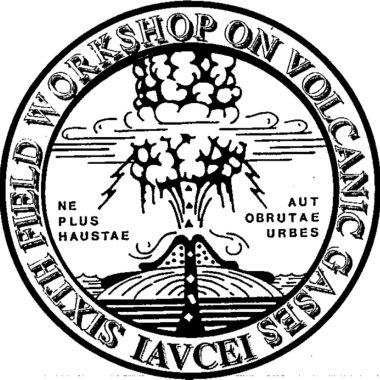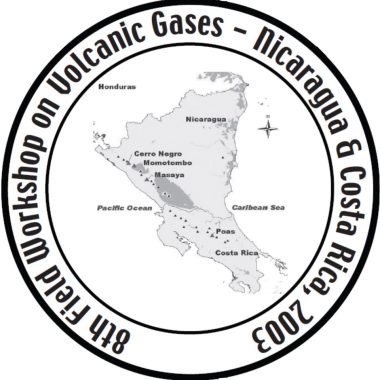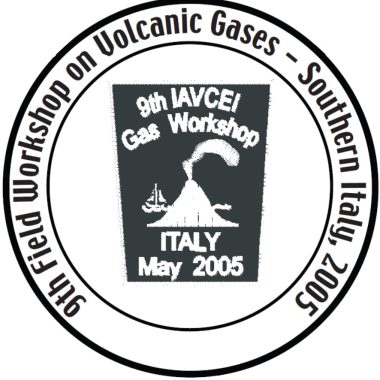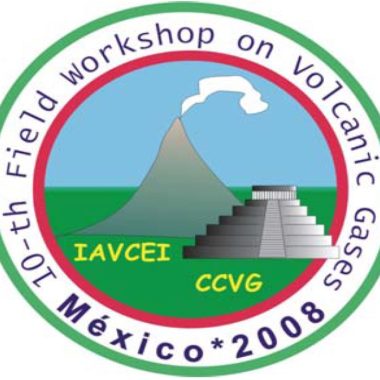7th Field Workshop Japan

The Seventh Field Workshop on Volcanic Gases of the IAVCEI Commission on the Chemistry of Volcanic Gases was held from 17 till 25 October. 2000 in Kyushu Japan. There was 44 participants from 14 countries (Belgium, Costa Rica, France, Germany, Indonesia, Italy, New Zealand, Nicaragua, Mexico, Russia, Spain, Taiwan, USA, Japan) and 24 papers were presented.
Scientific Program
1) Collection of volcanic gases
Two fumaroles at Satsuma-Iwojima and one at Kuju yolcano were selected to be sampled by the participants. The participants will report detailed description of their techniques, sampling conditions and analytical results of these samples after the workshop. 16 groups participated the• intercomparison program, and eleven groups reported the results. Control samples of acid and alkaline condensate were distributed to evaluate analytical errors.
2) Oral presentation
Twenty-four oral presentations of scientific papers on geochemical monitoring of volcanoes, volcanic gas chemistry, volatile emission from the earth and other related topics were given during the workshop. Title and authors of the abstract presented during the workshop are listed here.
For the complete report of the workshop and analytical result are presented in the 16th and the 17th newletter.
8th workshops at Nicaragua and Costa Rica

The 8th Field Workshop on Volcanic Gases of the IAVCEI Commission on the Chemistry of Volcanic Gases was held at Momotombo, Cerro Negro and Masaya, Nicaragua and Poas, Costa Rica from March 26 to April 1, 2003. The organizing committee consisted of Pierre Delmelle, Tobias Fischer, Eduardo Malavassi, John Stix and Wilfried Srtauch. The workshop was sponsored by IAVCEI, U.S. National Science Foundation (MARGINS), NASA (Solid Earth and Hazards Program), and the Central America Volcanic Hazards Project (ICSU/IAVCEI). There were over 80 participants from 20 countries, making this the largest gas workshop to date. For the first time the workshop included scientists using ground-based remote sensing and soil gas flux measurements in addition to the participants focusing on the traditional fumarole sampling techniques. In order to facilitate communication between the different groups, the first day of the workshop was dedicated to several key-note talks that summarized the current state of the art in each specialty of volcanic gas studies.
The contributions of the participants were numerous and divided into the following fields: 1) fumarole, spring and crater lake studies, 2) Remote sensing, 3) Plume studies, 4) Atmospheric and environmental impacts of gases, 5) Diffuse degassing and 6) Melt inclusion studies. For teh abstact see attached document.
Field work began on March 27 and the participants were divided into groups. The 1st group climbed Momotombo Volcano to sample high temperature (610 – 740 °C) fumaroles, Group 2 worked on the plume of Masaya volcano, and Group 3 worked on the flanks of Masaya to measure diffuse gas emissions. The next day (March 28), Group 1 went to sample the fumaroles of Cerro Negro, Group 2 continued working on the plume of Masaya, Group 3 continued diffuse degassing measurements also on Masaya, and Group 4 measured diffuse gases at Cerro Negro. As much as possible people were encouraged to move between groups.On March 29, all groups went to Masaya to perform field measurements in the morning.
Bus travel from Managua to San Jose, Costa Rica followed the next day (March 30).On March 31, all participants went to Poas. Fumarole sampling (low temperature) occurred in the Crater and a number of remote sensing measurements were performed on the plume from within the crater and the crater rim.
For the preliminary result see the 18th newsletter, wile for the analyses of the results the 19th.
9th workshop Southern Italy

The 9th Field Workshop on Volcanic Gases of the IAVCEI Commission on the Chemistry of Volcanic Gases was held at Vulcano, Etna and the Phlegran Field, southern Italy from May 1st to May 10th 2005. We thank the organizers Salvatore Inguaggiato and Clive Oppenheimer, for their hard work and making this workshop a successful activity. The workshop was sponsored by International Association of Volcanology and Chemistry of the Earth’s Interior (IAVCEI), CCVG, and the Istituto Nazionale di Geofisica e Vulcanologia – Sezione Geochimica di Palermo. There were over 120 participants from about 20 different countries, making this the largest gas-workshop to date. Note that the 2003 workshop held in Nicaragua and Costa Rica with 80 participants was the largest gas workshop at that time. Clearly the interest in studying volcanic gas emissions is growing, certainly reflecting in part the broadening of the scope of the commission to include remote sensing and soil gas investigations.
The workshop started off on May 2nd with a scientific symposium held at INGV-Palermo. The symposium consisted of several 30-minute talks and poster sessions covering a wide range of topics: soil degassing and plume studies with implications for monitoring of volcanic activity, chemical and isotopic studies of volcanic emissions and their relationships to large-scale tectonic processes and volcanic activity cycles, new techniques for determining plume compositions, environmental effect of volcanic degassing, trace gas species in volcanic emissions and volcanic emissions discharging under water. The scientific program ended with a CCVG business meeting and visits to the INGV laboratory facilities. For the program and abstarcts see the following link.
The field work started with transfer to Vulcano Islands and organization of the following groups: Direct sampling, Soils degassing. Hydrocarbon Gases and Telemetric measurements. Invetsigated sites at Vulcano were the Beach Hydrothermal area, Palizzi Area and the Vulcano crater.
After this all groups moved to Milazzo by boat and to Nicolosi by bus. In the afternoon, a group transferred to Paternò, S.Maria di Licodia, and anotehr one transfered to Fondachello and Salinelle areas and while the last group participated in a technical demonstrations on UV and IR spectroscopy.
The follwoing day field-work continued with a group transferred to Rifugio Sapienza to reach the Etna summit crater area. The people split in two groups, one worked close to craters to do direct plume sampling experiments, the other made telemetric measurements from a fixed position.
On May 8th everybody transferred to Pozzuoli by bus and spent the night.On May 9th direct gas sampling continued at Solfatara volcano.
The field section of the workshop ended with a free day on May 10th to visit Napoli, Vesuvio, Ischia and Mefite areas.
For the full report see the 19th newsletter, while for the evaluation of the results see the 20th newsletter.
10th Workshop Mexico

The Tenth CCVg Field Workshop was held in mexico on 10-20 November, 2008 and was supported by teh Institute of Geophysucs, UNAM. The workshop had more than 100 participants from 24 countries (Argentina, Belgium, Chile, Colombia, Costa Rica, DR Congo, Ecuador, France, Germany, Guatemala, Italy, Japan, Mexico, Nicaragua, Peru, Philippines, Portugal, Puerto Rico, Russia El Salvador, Sweden, Taiwan, UK And USA).
The general program of the 10 th workshop included: 1.two days of conference (oral and psoter sessions) , and a visit to CENAPRED (Centro Nacional de Prevencion de Dezastres). 2. Four days of fieldwork perfoemrd on the slopes of Popocatepetl and Colima volcanoes (two days at each volcano) with measuring the gas fluxes from teh craters and diffuse degassing from their flanks. The field trip to Colima volcano was hosted and organized by University of Colima (Nick Varley). 3. Three days of fieldwork at El Chichon, where a large group of gas geochemist climbed down into the El Chichon crater for sampling gases directly from fumarolic vents, bubbling gas from cater lake and measuring fluxes of diffuse CO2 from the crater floor. Also gas and water samples were taken from El Azufre springs, ~30 km NE of El Chichon.
The program can be viewd in the 20th CCVG newsletter.
For the complete report on the conference and the field activites including the gatherd data see the 21st CCVG newsletter.
For further reading see attached the El Chichon field guide.

